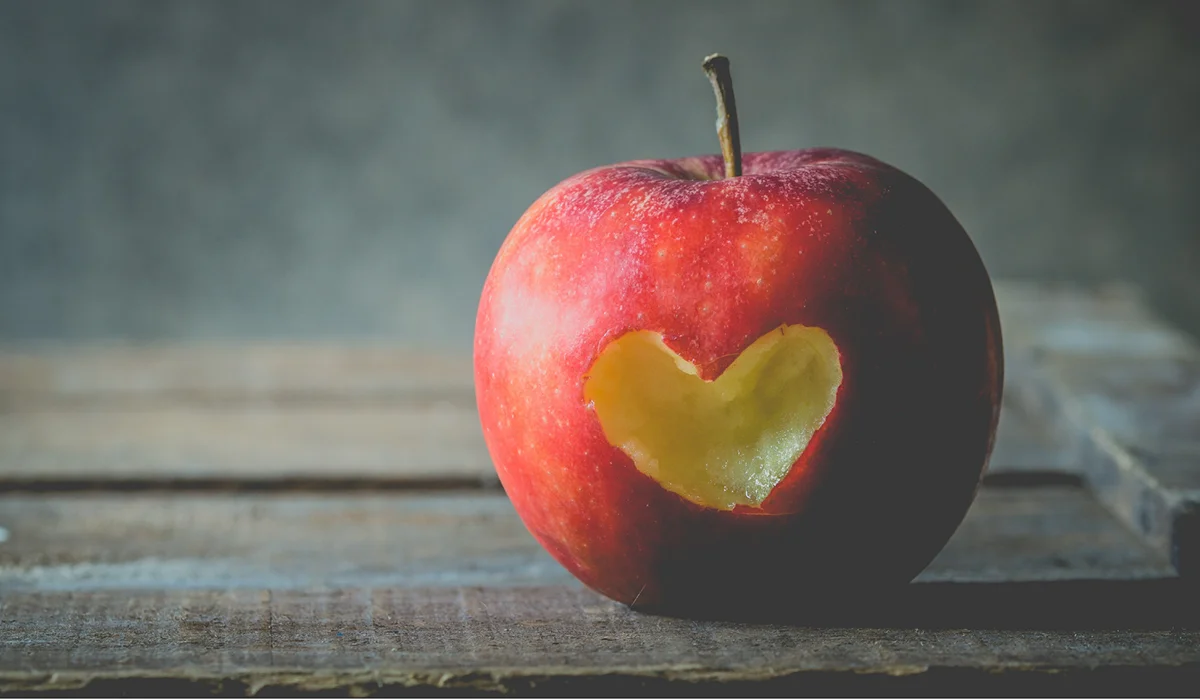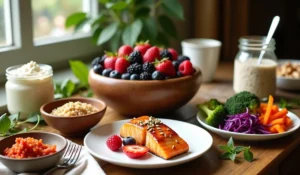People have used natural food preservatives like salt, sugar, vinegar, and spices to keep their food fresh since ancient times. Modern technology has come a long way, but keeping food fresh remains one of the most important challenges across the globe. We used synthetic and non-biodegradable preservatives mostly.
People care more about what they eat now, and I’ve noticed a fundamental change in consumer priorities. The need for natural or “clean-label” food ingredients has grown steadily for over 50 years. Western countries lead this trend, and the pandemic has pushed more people to choose food ingredients they see as better for their health.
The FDA gives three reasons to use food preservatives: they keep food safe and fresh, add nutritional value, and make food look and taste better. But synthetic preservatives often bring unwanted side effects. Some artificial preservatives in cereals and potato chips might make children hyperactive, harm their immune system, and even raise cancer risks.
In this piece, we’ll look at easy, natural options instead of chemical preservatives. These alternatives help us eat healthier without giving up convenience or taste. Nature offers many ways to preserve food, from vitamin-rich rosemary extract to unexpected choices like vitamin C-packed superfruits.
Why Natural Preservatives Matter
People’s growing concern about artificial additives has led to a transformation in how we think about food preservation. Both individuals and companies now look for safer alternatives that keep food fresh and safe because consumers know more about synthetic ingredients.
Health concerns with synthetic additives
Research shows that some synthetic food additives can harm our health over time. Several artificial food additives might increase cancer risks, especially nitrites and nitrates you find in processed meats. People report various health issues after eating certain preservatives – from digestive problems to breathing difficulties and skin conditions.
Australian research has found that all but one of these 400 approved additives are safe, yet 50 can cause negative reactions. BPA (bisphenol A) is a vital concern since scientists have linked it to cancer and hormone disruption. Some food colorings might also make children more hyperactive and cause behavioral issues.
The rise of clean-label food preservatives
Clean label products are revolutionizing the food industry as shoppers want more transparency and natural ingredients. This is a big deal as it means that 81% of shoppers think buying clean-label food products matters. The market keeps growing rapidly. Natural and organic product sales should reach $300 billion in 2024, which is three times more than in 2007.
We noticed these main reasons behind this trend:
- Organic production
- No additives or genetically modified ingredients
- Natural ingredients
- Environmentally responsible practices
About 30% of consumers buy fewer processed foods these days. Another 27% avoid products with ingredients they see as harmful. Clean label stands as a top trend to watch in 2024, especially when you have new products coming out. One-third of new products now carry some type of clean-label claim.
What are natural preservatives?
Natural preservatives come straight from nature. They help food last longer without artificial processing or mixing with other substances. You’ll find these preservatives mostly coming from plants, animals, and microbes.
Natural preservatives are a great way to get more benefits than synthetic ones. They often add nutritional value, boost flavor, and line up better with what consumers expect for their health. These natural antimicrobials keep food fresh longer by stopping bacteria and fungi from growing.
These natural alternatives help solve consumer worries about synthetic additives. At the same time, they do the important work of preventing foodborne illness and reducing food waste.
8 Natural Preservatives You Can Use at Home
Natural food preservation at home doesn’t need artificial additives. You can use time-tested methods that work just as well.
1. Freezing
Freezing stands out as one of the easiest ways to preserve food. The process works by lowering food temperature until water turns solid. This creates conditions where microbes can’t grow or spoil the food. You’ll get the best results when you blanch vegetables in boiling water first. This stops enzymes from causing deterioration. Cool them quickly in ice water afterward to prevent cooking.
2. Canning
Heat and sealed containers make canning an effective preservation method. The heat pushes air out and creates a vacuum seal that keeps contamination away. High-acid foods like fruits and pickles need water bath canning. Low-acid foods such as vegetables and meats require pressure canning at 240°F to eliminate botulism spores.
3. Pickling
Food stays fresh in high-acid solutions through vinegar or fermentation. The acid keeps spoilage at bay. Vinegar pickling needs a brief brine soak before adding the vinegar solution. Salt fermentation lets good bacteria turn sugars into lactic acid. This creates that distinctive tangy taste we all know.
4. Sugar and Salt
These kitchen staples preserve food through osmosis. They pull water from microorganisms, which dehydrates and kills them. Ancient Egyptians first discovered salt’s preservation powers. Sugar creates similar conditions that stop microbial growth, making it perfect for jams and preserves.
5. Vinegar and Fermentation
Acetic acid in vinegar (4-7%) lowers food pH and stops harmful bacteria from growing. The fermentation process lets good bacteria convert sugars to lactic acid. This preserves food naturally and adds healthy probiotics. You’ll find these benefits in foods like sauerkraut, kimchi, and kombucha.
6. Ascorbic Acid (Vitamin C)
This powerful antioxidant keeps processed products from changing color. It stops the enzyme that causes browning in foods. Your cut fruits stay fresh and colorful longer because vitamin C fights off oxygen and mold growth.
7. Rosemary Extract
Rosemary extract’s antioxidant and antimicrobial properties make it a great natural preservative. Research shows it prevents oxidation and stops microbes from growing in many foods. The European Food Safety Authority says it’s safe to use up to 400 mg/kg in foods.
8. Garlic and Onion
These common ingredients fight microbes naturally. Scientists have proven they work against bacteria like Listeria and Staphylococcus. Onion extract contains more phenolic and flavonoid compounds than garlic. This means it works better against certain bacteria, especially Gram-positive ones.
How to Choose the Right Natural Preservative
Picking the right natural preservative needs you to think over several important factors. Clean-label food preservatives are what customers just need these days, so knowing how to pick the right natural additives matters more than ever.
Think over the type of food
The way natural preservatives work varies by a lot based on what you’re trying to preserve. Products with shorter shelf life like fresh produce and baked goods might only need mild preservatives such as vinegar, salt, or citric acid. Seafood brings its own challenges because it spoils quickly and loses quality right after catching.
Your product’s makeup directly affects how natural preservatives do their job. The pH level, water activity, and specific ingredients determine which preservative will work best. To cite an instance, antioxidants stop enzymatic browning in cut fruits, so this makes customers happier.
Storage conditions and shelf life
The storage environment greatly affects how well preservatives work. Temperature, humidity, and packaging are the foundations of choosing the right natural preservative. People see natural preservatives as healthier options, but they’re nowhere near as stable as synthetic ones and don’t last as long.
If you want your products to last longer, artificial additives usually work better than natural ones because we designed them specifically to preserve. In spite of that, natural options protect products with shorter shelf lives well enough while staying clean-label friendly.
Taste and texture impact
The biggest thing to note is that preservatives can change how food tastes and feels. Some natural preservatives add their own flavors or smells that might not go well with your product’s taste. Essential oils really change bread’s taste and smell even as they stop microbes from growing.
Test small batches first to see how your chosen natural preservative changes the overall flavor. Note that even though natural preservatives like sugar and salt are safe to use, eating too much can affect your health negatively.
The perfect natural preservative should give you everything – it should work well, keep food safe, meet what consumers want, and make the food taste good. That’s how you end up with products that are both clean-label and delicious.
Tips for Transitioning to Natural Additives
The transition to natural preservatives requires both awareness and intention. You need to become a more informed consumer and then make gradual changes in your kitchen.
Read ingredient labels carefully
Food packaging’s front often creates a “halo effect” that makes unhealthy products appear healthier. Marketing claims shouldn’t be trusted blindly. The ingredient list shows items in descending order by weight. The first three ingredients make up much of what you’re eating. Watch out for:
- Hidden sugars that go by numerous names
- Sodium levels
- Artificial preservatives that may be listed under chemical names
Note that terms like “natural,” “organic,” or “gluten-free” don’t automatically mean a product is nutritious. Reading full labels is a vital part of maintaining a healthy lifestyle.
Start with small swaps
Gradual changes work best when transitioning to natural additives. Food safety remains the top priority. Product pH, water activity, processing methods, and storage conditions all matter when selecting alternatives. Each food product’s complexity demands unique solutions – what works for one might not work for another.
Look for clean-label certifications
Clean Label Project Certification will give a shopper extra confidence. This national nonprofit tests products for over 200 contaminants including heavy metals, chemicals, pesticides, and plasticizers. Products that earn certification rank in the top third of their category. The certification helps identify brands that put testing and safety protocols first.
Preserve seasonal produce naturally
Preserving your own seasonal produce will give a healthy diet throughout the year. Traditional preservation methods are a great way to get:
- Freedom from harmful toxins found in industrial preservation
- New skills that increase your resilience
- Better use of what you buy or grow with less waste
Traditional preservation relies on cool storage spaces like pantries or root cellars, combined with techniques like dehydration, sugar-based preserves, and fermentation pickling.
Conclusion
Natural food preservation takes us back to methods our ancestors used before chemical additives came along. This piece shows how salt, sugar, vinegar, and other natural substances keep food fresh without the health risks of synthetic preservatives.
You don’t need major lifestyle changes to switch to natural preservatives. Simple, thoughtful swaps can substantially cut down your exposure to harmful chemicals. Label reading is your first defense against hidden additives. Understanding the right preservation method for different foods helps you make better choices.
Anyone can use freezing, canning, pickling, and fermentation at home. These techniques extend food shelf life and improve flavor profiles and nutritional value. Common items like rosemary extract, vitamin C, garlic, and onions work surprisingly well as preservatives.
The clean-label movement proves what many people suspected – consumers want food that’s both safe and naturally preserved. Companies have responded to this need, but we still must check claims through certifications and careful label reading.
Natural food preservation blends traditional wisdom with modern health awareness. Start by preserving seasonal produce with one method, then build your skills over time. Your body benefits from fewer synthetic additives, while your taste buds enjoy the better flavors that natural preservation creates. The path to cleaner eating is available and rewarding – a simple way to make healthier, more mindful food choices.





